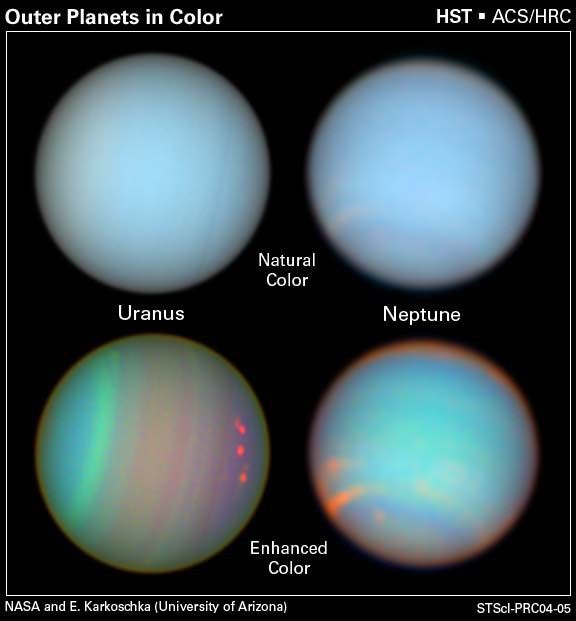1 min read
Neptune in Natural Colors

About the Object
- DistanceDistanceThe physical distance from Earth to the astronomical object. Distances within our solar system are usually measured in Astronomical Units (AU). Distances between stars are usually measured in light-years. Interstellar distances can also be measured in parsecs.The semi-major axis of Neptune's orbit about the Sun is 30.06 Astronomical Units (A.U.) or roughly 4.5 billion km.
- DimensionsDimensionsThe physical size of the object or the apparent angle it subtends on the sky.Neptune has a diameter of roughly 30,800 miles (49,600 km) at the equator.
About the Data
- Data DescriptionData DescriptionProposal: A description of the observations, their scientific justification, and the links to the data available in the science archive.
Science Team: The astronomers who planned the observations and analyzed the data. "PI" refers to the Principal Investigator.The Neptune STIS/CCD data are from the HST proposal 9330: E. Karkoschka (U. AZ), M. Lemmon (Texas A&M), M. Tomasko (U. AZ) Note: Neptune images within this press release were taken with STIS/CCD. - InstrumentInstrumentThe science instrument used to produce the data.HST> STIS/CCD
- Exposure DatesExposure DatesThe date(s) that the telescope made its observations and the total exposure time.August 3, 2003
- FiltersFiltersThe camera filters that were used in the science observations.G430L, G750L, CLEAR, and F28X50LP
- Object NameObject NameA name or catalog number that astronomers use to identify an astronomical object.Neptune
- Object DescriptionObject DescriptionThe type of astronomical object.Planet
- Release DateJanuary 22, 2004
- Science ReleaseThe Colorful Lives of the Outer Planets
- CreditNASA and Erich Karkoschka, University of Arizona
Related Images & Videos

Rings and Moons Circling Uranus
This wider view of Uranus reveals the planet's faint rings and several of its satellites. The area outside Uranus was enhanced in brightness to reveal the faint rings and satellites. The outermost ring is brighter on the lower side, where it is wider. It is made of dust and...

The Colorful Lives of the Outer Planets
Atmospheric features on Uranus and Neptune are revealed in images taken with the Space Telescope Imaging Spectrograph and the Advanced Camera for Surveys aboard NASA's Hubble Space Telescope. The observations were taken in August 2003. The top row reveals Uranus and Neptune in...
Share
Details
Last Updated
Aug 17, 2025
Contact
Media
Claire Andreoli
NASA’s Goddard Space Flight Center
Greenbelt, Maryland
claire.andreoli@nasa.gov

































